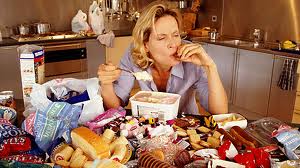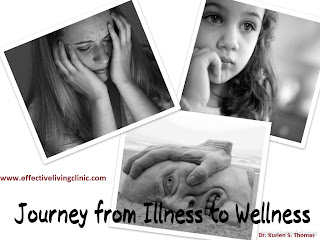Menopause is the permanent end of menstruation and fertility, defined as occurring 12 months after your last menstrual period.
Menopause is a natural biological process, not a medical illness. Even so, the physical and emotional symptoms of menopause can disrupt your sleep, sap your energy and — at least indirectly — trigger feelings of sadness and loss.
Even though menopause is not a disease, you shouldn't hesitate to seek treatment for severe symptoms. Many effective treatments are available, from lifestyle adjustments to hormone therapy.
Technically, you don't actually "hit" menopause until it's been one year since your final menstrual period. In the United States, that happens at about age 51, on average.
But in the months or years leading up to that point, you might experience these signs and symptoms:
· Irregular periods
· Decreased fertility
· Vaginal dryness
· Hot flashes
· Sleep disturbances
· Mood swings
· Increased abdominal fat
· Thinning hair
· Loss of breast fullness
When to see a doctor
Schedule regular visits with your doctor during the years leading up to menopause (perimenopause) and the years after menopause (postmenopause) for preventive health care as well as care of medical conditions that may occur with aging.
Schedule regular visits with your doctor during the years leading up to menopause (perimenopause) and the years after menopause (postmenopause) for preventive health care as well as care of medical conditions that may occur with aging.
If you've skipped a period but aren't sure you've started the menopausal transition, you may want to see your doctor to determine whether you're pregnant. Always seek medical advice if you have bleeding from your vagina after menopause.
Menopause can result from:
· Natural decline of reproductive hormones. As you approach your late 30s, your ovaries start making less estrogen and progesterone, the hormones that regulate menstruation. During this time, fewer potential eggs are ripening in your ovaries each month, and ovulation is less predictable. Also, the post-ovulation surge in progesterone — the hormone that prepares your body for pregnancy — becomes less dramatic. Your fertility declines, partially due to these hormonal effects.
These changes become more pronounced in your 40s. Your menstrual periods may become longer or shorter, heavier or lighter, and more or less frequent, until eventually, your ovaries stop producing eggs, and you have no more periods. It's possible, but very unusual, to menstruate every month right up to your last period. More likely, you'll experience some irregularity in your periods.
· Hysterectomy. A hysterectomy that removes your uterus, but not your ovaries, usually doesn't cause menopause. Although you no longer have periods, your ovaries still release eggs and produce estrogen and progesterone. But an operation that removes both your uterus and your ovaries (total hysterectomy and bilateral oophorectomy) does cause menopause, without any transitional phase. Your periods stop immediately, and you're likely to have hot flashes and other menopausal signs and symptoms.
· Chemotherapy and radiation therapy. These cancer therapies can induce menopause, causing symptoms such as hot flashes during the course of treatment or within three to six months.
· Primary ovarian insufficiency. Approximately 1 percent of women experience menopause before age 40. Menopause may result from primary ovarian insufficiency — when your ovaries fail to produce normal levels of reproductive hormones — stemming from genetic factors or autoimmune disease, but often no cause for primary ovarian insufficiency can be found.
Several chronic medical conditions can develop after menopause:
· Cardiovascular disease. When your estrogen levels decline, your risk of cardiovascular disease increases. Heart disease is the leading cause of death in women as well as in men.
· Osteoporosis. This condition causes bones to become brittle and weak, leading to an increased risk of fractures. During the first few years after menopause, you may lose bone density at a rapid rate, increasing your risk of osteoporosis. Postmenopausal women are especially susceptible to fractures of their hips, wrists and spine.
· Urinary incontinence. As the tissues of your vagina and urethra lose their elasticity, you may experience a frequent, sudden, strong urge to urinate, followed by an involuntary loss of urine (urge incontinence), or the loss of urine with coughing, laughing or lifting (stress incontinence). Strengthening pelvic floor muscles with Kegel exercises or using a topical vaginal estrogen may help relieve symptoms of incontinence.
· Weight gain. Many women gain weight during the menopausal transition. You may need to eat less — perhaps as many as 200 to 400 fewer calories a day — and exercise more, just to maintain your current weight.















